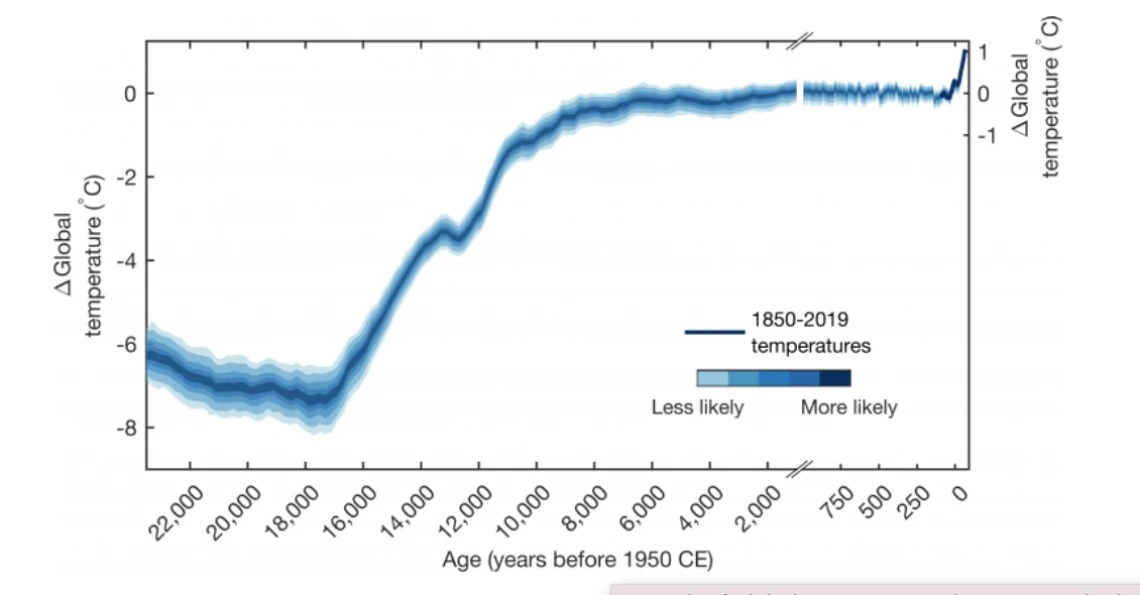A University of Arizona-led effort to reconstruct Earth's climate since the last ice age, about 24,000 years ago, highlights the main drivers of climate change and how far out of bounds human activity has pushed the climate system.

Figure Caption: Global average surface temperature since the last ice age 24,000 years ago. Time is stretched for the past 1000 years to visualize recent changes. Matthew Osman
University of Arizona Geoscientists Matthew Osman and Jessica Tierney led the effort to reconstruct Earth's climate since the last ice age, about 24,000 years ago.
They looked at the chemical signatures of marine sediments to get information about past temperatures. Because temperature changes over time can affect the chemistry of a long-dead animal's shell, paleoclimatologists can use those measurements to estimate temperature in an area. It's not a perfect thermometer, but it's a starting point. Computer-simulated climate models, on the other hand, provide temperature information based on scientists' best understanding of the physics of the climate system, which also isn't perfect. The team decided to combine the methods to harness the strengths of each. The study, published in Wednesday's Nature, has three main findings:
- It verifies that the main drivers of climate change since the last ice age are rising greenhouse gas concentrations and the retreat of the ice sheets.
- It suggests a general warming trend over the last 10,000 years, settling a decade-long debate the paleoclimatology community about whether this period trended warmer or cooler.
- The magnitude and rate warming over the last 150 years far surpasses the magnitude and rate of changes over the last 24,000 years.
A full article appears in University of Arizona News today.

